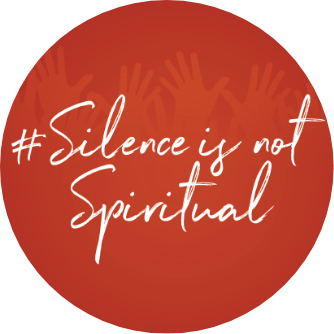
How to Be an Ally
“There is no greater agony than bearing an untold story.” Maya Angelou
Abuse of any kind attacks the inherit dignity of a person, it pierces the soul and leaves the toxicity of shame in its wake. Victims are left feeling powerless to restore their sense of safety and security, betrayed by those who were supposed to care for them, and questioning their love and belonging. The impact from abuse attacks the structures of faith for a victim. Faith is what grounds us, and it is founded on a belief in God’s goodness. Abuse shatters that belief, leaving a victim grappling with how to put the pieces back together again.
The damage from abuse occurs in relationship and the subsequent journey of healing also happens in relationship. The church has the privilege of joining God in bringing about healing, and sadly the church also has the power to do more damage. Lack of attention to policies and procedures and poor responses to stories can create an environment that is re-traumatizing for survivors, undermining the work of healing and recovery.
“Traumatized people feel utterly abandoned, utterly alone, cast out of the human and divine systems of care and protection that sustain life. Thereafter, a sense of alienation, of disconnection, pervades every relationship, from the most intimate familial bonds to the most abstract affiliations of community and religion. When trust is lost, traumatized people feel that they belong more to the dead that to the living.” Judith Herman, Trauma and Recovery: The Aftermath of Violence – from Domestic Abuse to Political Terror
There are three key things the churches can do to aid the process of recovery for trauma survivors: help them re-establish a sense of safety, offer space to tell their story and grieve, create a pathway for reconnecting with their spiritual community.
Here are some suggestions and resources for how your church can become a safer place and provide support and care for survivors.
Educate pastors and elders (church leadership) on sexual harassment, all types of abuse and the dynamics involved in each.
- Pay for outside education/seminars on abuse that clearly support the value of professional help for victims and perpetrators. Educational seminars that foster the idea that abuse can be handled “in house” and that counseling should be done by untrained pastors, or be tied to scripture study and prayer are not helpful in addressing the systemic nature of secrecy and silencing that we are seeking to break.
Suggested Resources:
The Courage Conference
GRACE – Godly Response to Abuse in a Church Environment
The Allender Center at The Seattle School of Psychology and Theology
Demonstrate to church members that your leadership team takes issues of abuse seriously and has an appropriate plan and practices in place to respond to any reports of abuse.
- This plan should include detailed best practices for all hiring and approval of staff and volunteers with access to children, teens and young adults (college age) including but not limited to references and thorough background checks.
- Detailed instructions on what to do if there is suspicion of abuse or a report of abuse regarding a staff person or volunteer, including the presence of 3rd party consultants to assist and provide an objective investigation.
- Perpetrators will be reported to the proper authorities.
Perform a yearly check in with the staff, volunteers and congregation through anonymous surveying to measure their perception of how leadership is doing and what type of culture is being cultivated with regards to church safety in the realm of addressing abuse and the valuing of women. And, making the results of that survey public to the congregation along with action steps if needed that are being taken to correct and improve as needed.
Church staff should have a list of vetted/recommended counselors for referrals.
Abuse should be regularly spoken about from the pulpit in ways that cultivate a culture of understanding God’s perspective on abuse, his love and care for victims, and a healthy view of forgiveness for those who have perpetrated violence. This helps foster a culture of safety for the vulnerable people in the congregation, and encourages truth telling by victims of abuse. It also communicates that there is a place of belonging for survivors.
Ensure that women have a presence in leadership and decision making. Their voices being regularly and consistently heard by the people fosters the culture of safety by demonstrating that women are valued and believed.
Offer story circles, these do not take the place of counseling but are in addition to therapy. Story circles offer a place for victims to begin sharing their stories and connecting with other survivors in a church setting. These can be led by lay-people and church staff who have been trained to provide care in this manner.
Suggested Resources:
Mending the Soul
Suggested Reading for Pastors and Leaders:
Trauma and Grace by Serene Jones
The Soul of Shame by Curt Thompson
Healing the Wounded Heart by Dan Allender
Resurrecting Wounds by Shelly Rambo
I Will Survive by Lori S. Robinson
Surviving the Silence by Charlotte Pierce-Baker
No Secrets No Lies by Robin D. Stone


